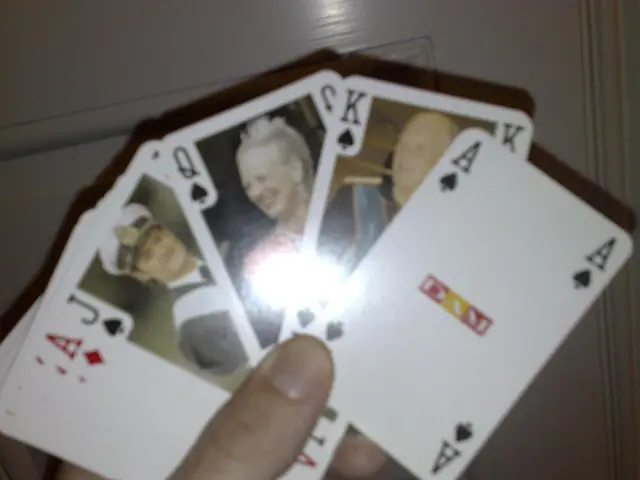Unraveling the Fascinating History of Roulette: A Game of Chance and Strategy
Exploring the Evolution of the Game: A Chronicle of Its Past
Tracing its roots back to the French, roulette - known as the "little wheel," originated in the 18th century with influences from English and Italian games like Roly-Poly and Biribi [1][3]. Blaise Pascal, a French mathematician, formulated the game's concept while searching for a motion machine in the 17th century [1][3]. The game's modern, recognizable form materialized in 18th century Paris, boasting a wheel with 38 slots numbered 1-36, 0, and 00 [3].
Spreading Across Europe
The single-zero roulette wheel, which offered a more favorable house edge, made its debut in Germany by the Blanc brothers in 1843 [1][3]. This version dominated European casinos due to its allure.
Crossing the Pond: American Roulette
In contrast, American roulette features the double-zero wheel, which raised the house edge significantly and made it less player-friendly but more profitable for casinos [2][3]. This double-zero version became a staple in American casinos, particularly in destinations like Las Vegas [4].
The Role of Cheating in its Evolution
Roulette's history has been marked by attempts at game manipulation. Early games, such as Biribi, were prone to cheating [3]. With the introduction of the wheel in roulette, gameplay became more transparent. However, cheating continued, with players trying to control the wheel's physics or use advanced technology to predict outcomes. To tackle this issue, casinos have implemented security measures such as regular wheel checks and casino surveillance [5].
The Roulette Landscape Today
Today, the ever- popular European roulette (single-zero) and American roulette (double-zero) continue to captivate players worldwide. The French variant, while less common, is still prevalent in traditional European casinos such as those in Monte Carlo. Below is a summary of the major roulette versions:
| Version | Characteristics | Origin ||----------------|-------------------------------|-----------------|| European Roulette | Single zero, 37 slots | Germany (1843) || French Roulette | Similar to European, often "La Partage" rule [2] | France || American Roulette | Double zero, 38 slots | United States |
In conclusion, the transformative journey of the French roulette to its diverse versions across Europe and America has had a significant impact on casino gaming. Understanding the game's evolution offers insights into the role of cheating, security measures, and house edge differences. As roulette continues to evolve, it persists as a testament to human ingenuity and the love for a thrilling game of chance and strategy.
In the span of its history, European roulette, initially introduced in Germany in 1843, has become a mainstay in traditional European casinos like Monte Carlo, offering a single zero on its wheel and 37 slots. On the other hand, American roulette, identifiable by its double zero and 38 slots, emerged as a popular variant in American casinos, particularly in destinations like Las Vegas. These two versions, along with the lesser-known French variant, continue to shape casino-and-gambling trends worldwide, reflecting gambling-trends of the past and present, and most notably, the ever-popular casino-game of roulette.




